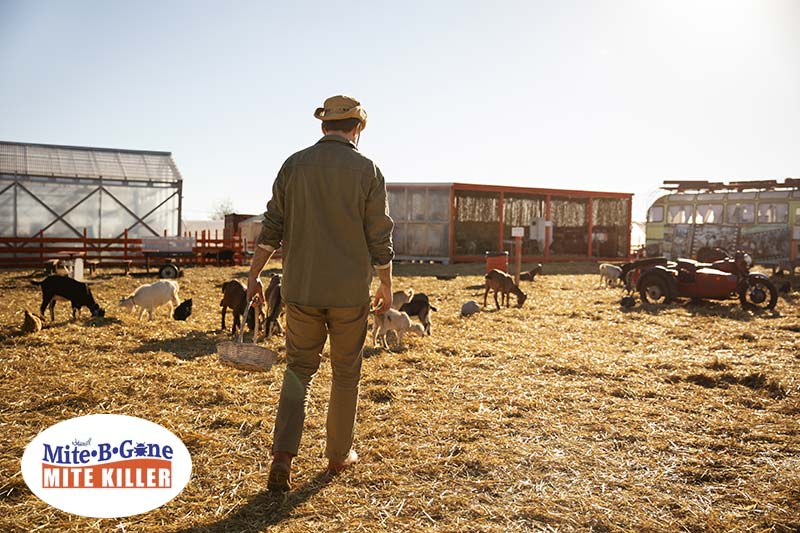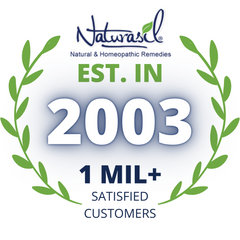Introduction
Mite infestations in farm animals can significantly challenge farmers and animal caretakers. These tiny arachnids not only cause discomfort and health issues in livestock but can also affect productivity and overall farm profitability. In this article, we explore affordable and safe treatment options for controlling mite populations in farm animals, ensuring their well-being while maintaining the economic viability of the farm.
Understanding Mites in Farm Animals
Before delving into treatments, it's crucial to understand what mites are and how they impact farm animals. Mites are small arachnids related to ticks and spiders. They thrive in various environments and can cause several issues in farm animals, such as mange, scabies, and other skin conditions. These infestations can lead to irritation, hair loss, reduced weight gain, and in severe cases, systemic illness.
Identifying the Problem
The first step in effective mite management is accurate identification. Farmers should look for signs of mite infestation, including excessive scratching, skin lesions, scabs, and changes in animal behavior due to discomfort in severe cases. Veterinary consultation is crucial for proper diagnosis and to rule out other causes of skin irritation.
Safe and Affordable Treatment Options
- Chemical Treatments
- Ivermectin: A widely used anti-parasitic treatment effective against a range of mites. It can be administered orally, topically, or via injection. However, it's essential to use it judiciously to prevent resistance development.
- Selamectin: Another anti-parasitic effective against mites, available as a topical solution. It's safe for most farm animals and has the added benefit of being effective against various other parasites.
- Lime Sulfur Dip: An old-fashioned but effective treatment for mites. It's mixed with water and used as a dip or spray. While it has a strong odor and can be messy, it's highly effective and safe.
- Natural Treatments
- Mite-B-Gone: By far the safest option, using only natural ingredients and used over 1 Million times over the last 20 years. Safe to use on birds, reptiles, hamsters, chickens, rabbits, cats, dogs, etc.
- Diatomaceous Earth: This is a natural, non-toxic powder that dehydrates and physically damages the mites when dusted on animals and their bedding.
- Neem Oil: This is a natural oil with insecticidal properties. It can be diluted and sprayed on animals, providing relief from mites while being gentle on the skin.
- Essential Oils: Certain essential oils, like eucalyptus or tea tree oil, effectively deter mites and prevent skin irritation when diluted.
- Environmental Management
- Regular Cleaning: Regularly cleaning and sanitizing barns, bedding, and feeding areas can help reduce mite populations. For larger treatments, see our 1-Gallon Mite-B-Gone Mite Treatment.
- Quarantine New Animals: New animals should be quarantined and checked for mites before integrating them with the rest of the herd.
- Control Wild Animal Access: Wild animals can be carriers of mites. Controlling their access to barns and feed can help reduce mite infestation.
Implementing a Treatment Plan
Once you choose the treatment option, it's crucial to implement it effectively. For chemical treatments, following the dosage and administration instructions precisely is essential. With natural treatments, regular application may be necessary to be effective. Farm maintenance routines should continuously integrate environmental management strategies.

Monitoring and Follow-Up
After treatment, continuous monitoring is necessary to ensure the treatment's effectiveness and prevent re-infestation. Regular health checks of the animals, monitoring for any signs of mites, and maintaining a clean environment are key.
Implementing Mite-B-Gone Control Program on the Farm
Developing a Strategic Plan
A strategic plan for mite control begins with a thorough assessment of the farm's current situation, including the types and extent of mite infestations previously experienced. The plan should incorporate:
- Identification of High-Risk Areas: Recognizing areas on the farm more susceptible to mite infestations, such as bedding, feeding zones, and areas with high animal density.
- Selection of Appropriate Treatments: Choosing effective treatments against the specific mites present while also ensuring safety for the animals and farm workers is crucial. This may include a combination of chemical treatments, natural remedies, and biological controls.
- Preventive Measures: Implementing preventive strategies, such as regular cleaning and disinfection of animal living spaces, proper waste management, and maintaining optimal animal health through nutrition and care, is crucial for effective mite control on the farm.
Practical Application and Monitoring
Successful implementation requires:
- Training for Farm Staff: Ensuring that all individuals involved in animal care know the signs of mite infestation, the correct application of treatments, and safety precautions.
- Regular Application of Treatments: It's essential to establish a schedule for treatment applications, taking into account the life cycle of the mites and the recommended frequency of the chosen treatments.
- Monitoring and Documentation: Keeping records of treatment applications, infestation levels, and any side effects observed in the animals. This data is crucial for evaluating the effectiveness of the control measures.
The Importance of Regular Review
A mite control program is not a static plan; it requires ongoing evaluation and adaptation:
- Assessing Effectiveness: Regularly review the collected data to determine if the current strategies are effectively reducing mite levels.
- Adapting to Changes: Being prepared to adjust the program in response to changes such as new mite species, alterations in farm practices, or evolving resistance patterns in mites.
- Continual Learning and Improvement: Staying informed about the latest developments in mite control and integrating new knowledge and techniques into the program.
By approaching mite control with a comprehensive, dynamic strategy, farmers can effectively manage these pests, safeguarding the health and productivity of their animals. This approach not only addresses current infestations but also reduces the likelihood of future outbreaks, contributing to the overall sustainability and efficiency of the farm.
Conclusion
Mite infestations in farm animals are a manageable problem with the right approach. Safe and affordable treatments, ranging from chemical and natural remedies to environmental management strategies, can effectively control mite populations. The key is identifying the problem early, choosing the appropriate treatment, and implementing it effectively. Regular monitoring and preventive measures are equally important to ensure the health and productivity of farm animals.
As farmers and animal caregivers, the well-being of our animals is a top priority. By adopting effective mite control strategies, we can ensure that our animals remain healthy and productive, contributing positively to the overall success of our farming operations. We encourage you to explore further into effective Mite Treatment for Livestock.
Products like Mite-B-Gone offer innovative solutions that can be integral to your mite management strategy. By staying proactive and equipped with the right tools and knowledge, we can ensure the health and well-being of our farm animals, ultimately contributing to a more productive and sustainable farming practice. Let's take this step together towards a healthier, mite-free future for our livestock.






